African American Museum
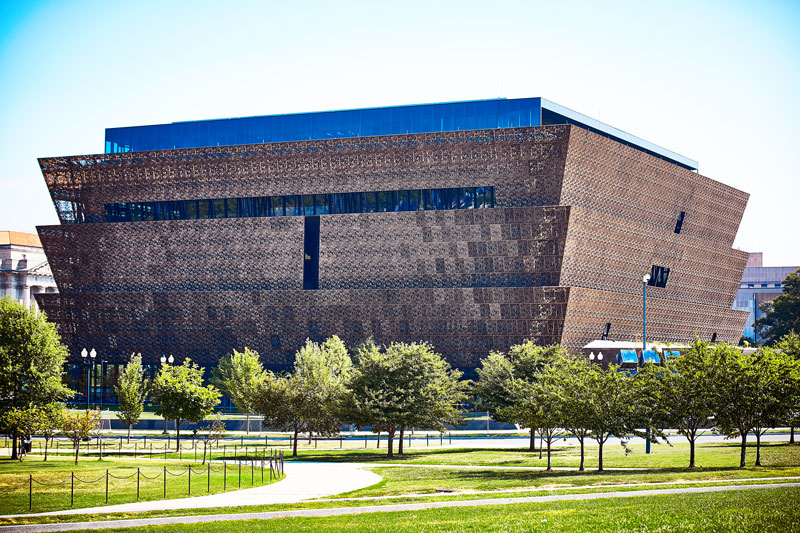 Last month, I visited the National Museum of African American History and Culture on the National Mall, a place I had wanted to see since it opened last September. On March 9, Joanne and Powell Hutton, my hosts for the weekend, and Carol Starr and I had lunch at the Museum’s Sweet Home Café, then spent more than two hours concentrating on History exhibits in the three underground levels of the museum, purposely dark and severe. The entrance wall declared:
Last month, I visited the National Museum of African American History and Culture on the National Mall, a place I had wanted to see since it opened last September. On March 9, Joanne and Powell Hutton, my hosts for the weekend, and Carol Starr and I had lunch at the Museum’s Sweet Home Café, then spent more than two hours concentrating on History exhibits in the three underground levels of the museum, purposely dark and severe. The entrance wall declared:
Five hundred years ago, a new form of slavery transformed Africa, Europe, and the Americas. For the first time, people saw other human beings as commodities–things to be bought, sold, and exploited to make enormous profits. This system changed the world. The United States was created in this context, forged by slavery as well as a radical new concept, freedom. This is a shared story, a shared past, told through the lives of African Americans who helped form the nation.
White letters on black backgrounds, a clever way of connoting white oppression. Most of the visitors were black or multi-hued, including many families, several with grandchildren. They appeared quietly exultant to be in this museum and eager to learn; we four were appropriately in the minority. It was so crowded that I missed many photos, but the museum website is richly endowed.
The collection is vast and well-organized into fourteen exhibitions. Slavery and Freedom alone has eighteen categories. As the website states, “One cannot view Harriet Tubman’s shawl, Nat Turner’s Bible, the small shackles made for the fragile ankles of a child, or a slave cabin without contemplating the individuals who owned or encountered such objects. Such powerful artifacts bring to life the stories of inhumanity and terror, and of resistance, resilience and survival.”
My mother’s family owned no slaves, but operated cotton gins in Texas. These two displays caught my eye and made me wonder how my grandfather would have reacted to this view of his business.
A display on Jefferson contrasts sharply with the Jefferson Memorial across the Mall. Here, 609 boxes, representing the 609 slaves Jefferson owned over the course of his life, are stacked between him and the Declaration of Independence. The labor and service of his slaves provided him personal liberty and wealth. Like Jefferson, 12 of the first 18 American presidents owned slaves. Jefferson’s Declaration helped create a new nation based on individual freedom and self-government, but it did not extend “life, liberty and the pursuit of happiness” to all Americans, undermining the idea that “all men are created equal.” Reading Alexander Hamilton last summer had already altered my earlier enchantment with Thomas Jefferson.
I was glad to recognize Robert Smalls, from an exhibit Steve and I had seen in Beaufort, South Carolina. During the Civil War Smalls captured a Confederate boat and turned it over to the Union Navy in Charleston Harbor. Later he was elected to the U.S. Congress. There was little else to make one proud; these photographs made me cringe.
The exhibits I saw were as powerful and shameful as those I had seen years ago at the Holocaust Museum, not far away. I was on the verge of tears when I heard a guard’s walkie-talkie report a “high-value party.” Soon I saw a man I recognized from news reports as Lonnie G. Bunch III, the Director of the Museum, bidding farewell to a group of finely dressed people, easy to construe as donors. As he turned to depart, I asked if I could express my appreciation, then spontaneously burst into tears. “I feel so ashamed,” I blubbered. A member of the donor group, sensing a special moment, took my cell phone from my hand, and snapped these pictures.
In response to my distress, Bunch acknowledged my feelings and paraphrased the Museum’s central mission “to help us better understand who we are as Americans and point us toward a better tomorrow.” What an emotional roller coaster–the joy of delicious food with good friends, the horror evoked by many displays, feelings of shame and sorrow, then consolation, and ultimately, inspiration to keep striving for a better America.
Update, May 28, 2019: Lonnie Bunch named as Director of the Smithsonian Institution.
On March 10, my friend Elizabeth Lodal and I had a more joyous experience. The Culture part of the museum was all above ground, with brighter colors and more light to celebrate African American achievements. The opening statement was written in strong black on a white background:
Culture shapes lives. There were no African Americans before the Transatlantic Slave Trade. A new culture emerged out of the trauma of that history and through traditions made and remade on new shores. This self-creation is everywhere in the day-to-day lives of African Americans. It’s in the food eaten, the languages spoken, the art created, and many other forms of cultural expression. Held within and passed through families and communities, African American culture reflects beliefs, informs behavior, fosters creativity, and most of all, sustains the spirit during times of overwhelming adversity.
With streaming videos of sports teams and music groups in every room, this was a very happy place to be. I especially liked the artworks by African Americans; ten are in this album of African American Culture Displays . Each is paired with an identifying placard. Only one had I seen elsewhere. Toward the end is a small display about Bill Cosby, that states “recent revelations about alleged sexual misconduct have cast a shadow over his entertainment career and severely damaged his reputation.”
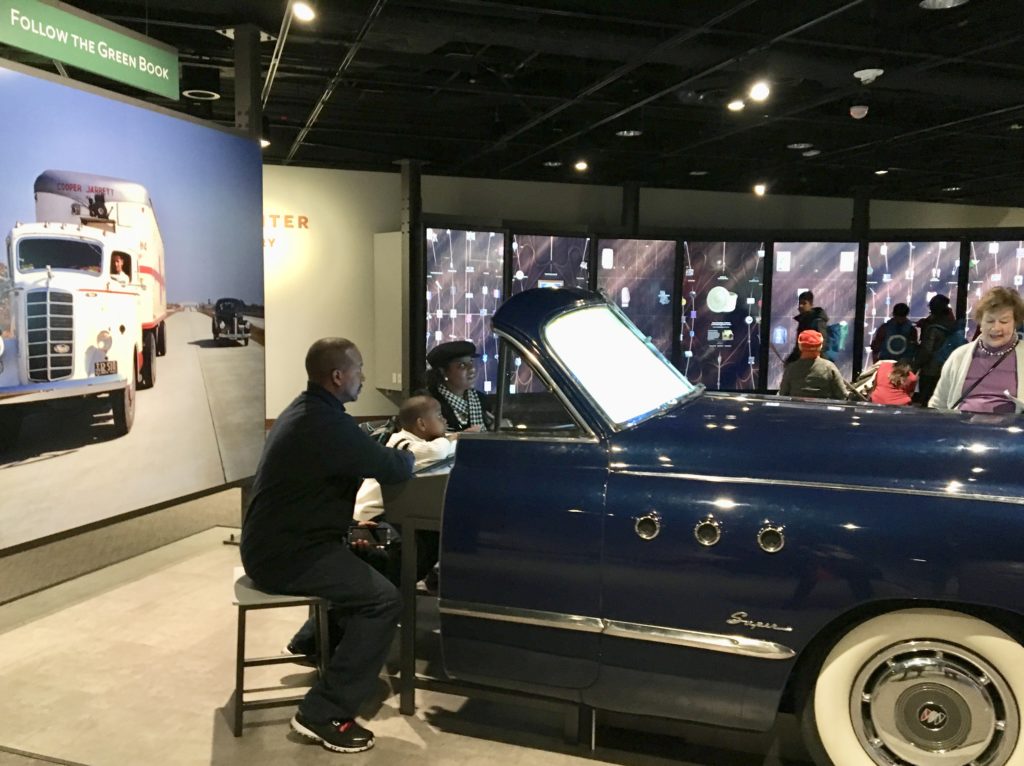
This photo shows a visiting family at a mock-up of an old Buick, learning how to plan a trip with The Green Book, a mid-century guide to where African Americans were welcome, or could, at least, get service. At last, evidence that things have changed.
The Museum Building is itself a work of art. The exterior iron lattice work was inspired by a Ghanian headdress and honors the memory of African American slaves who constructed much of the decorative ironwork in Charleston and New Orleans. There are intermittent spaces that allow views of the Capitol, the White House, and the Washington Monument. I highly recommend viewing the story of the museum’s design and construction here. But best of all, see it for yourself. A limited number of free timed passes are available each day at 6:30 am at the Museum website.
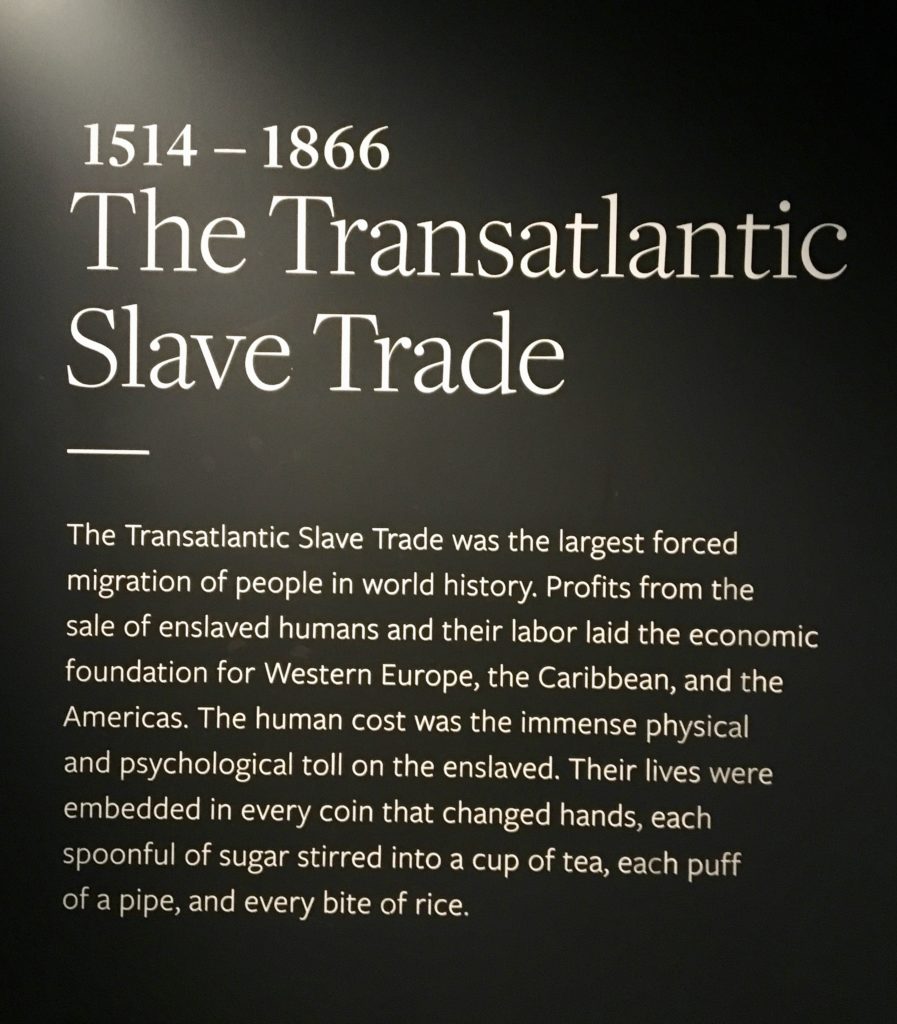
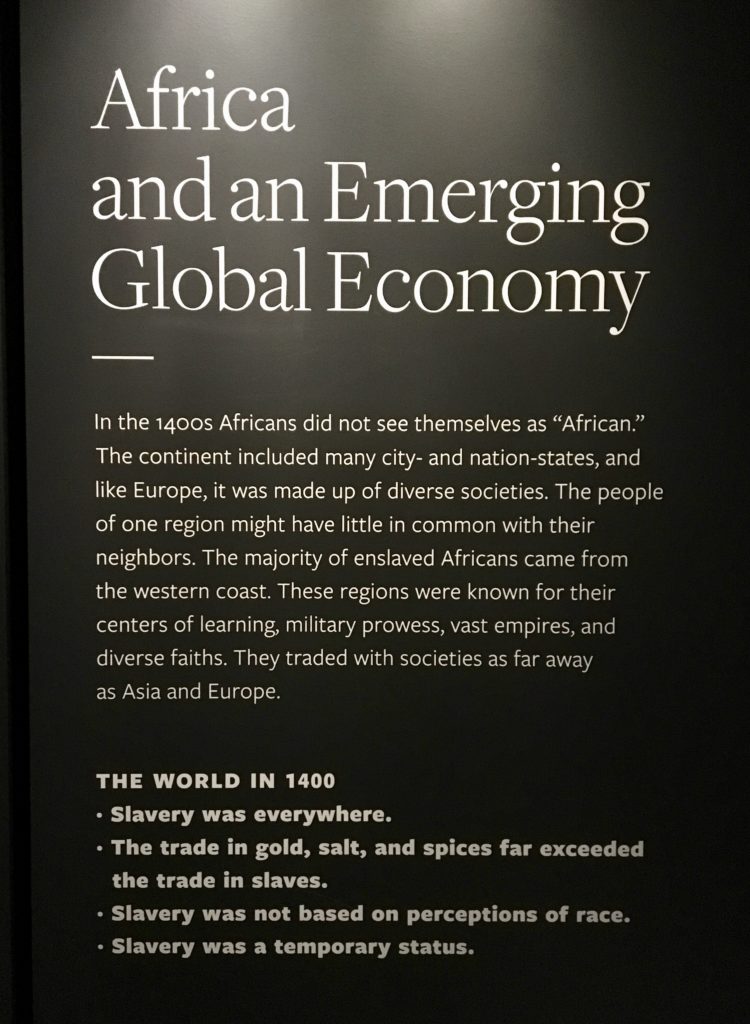
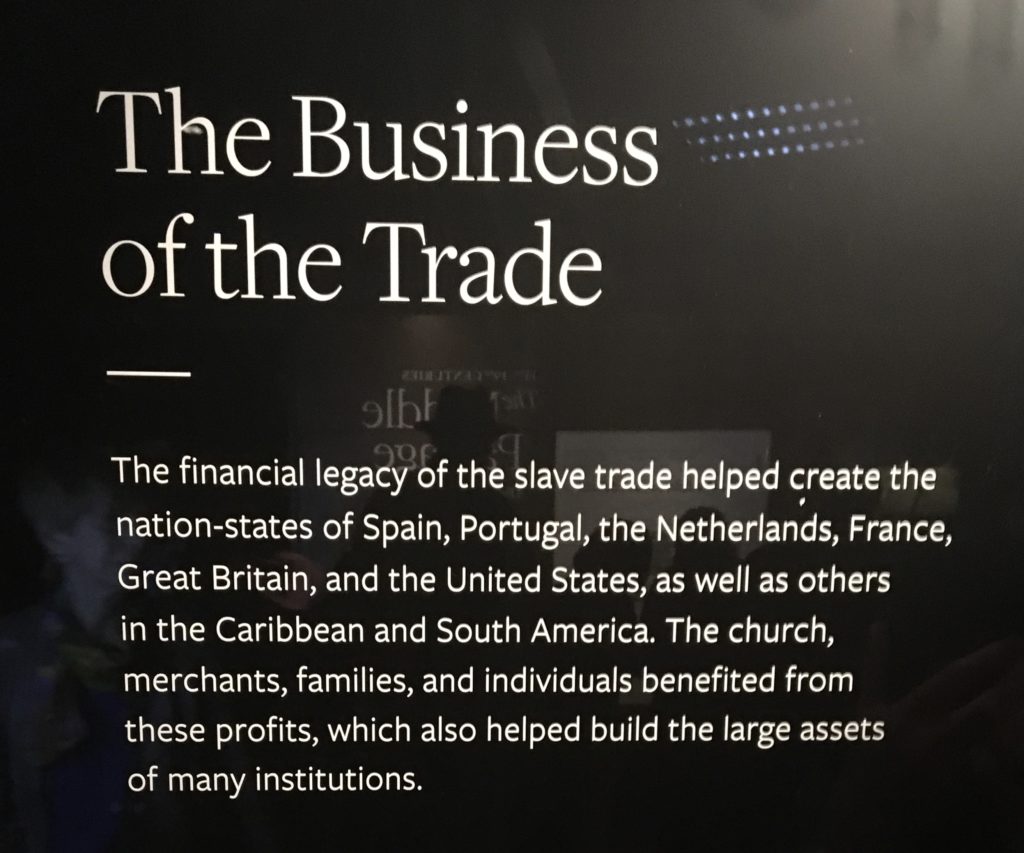

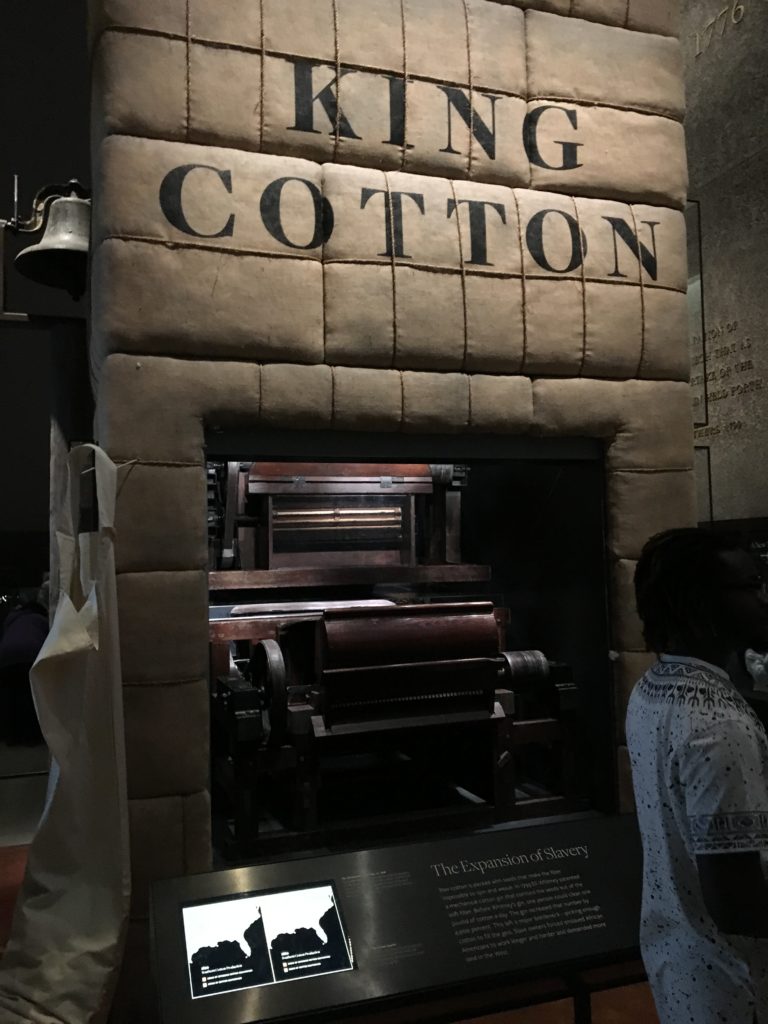
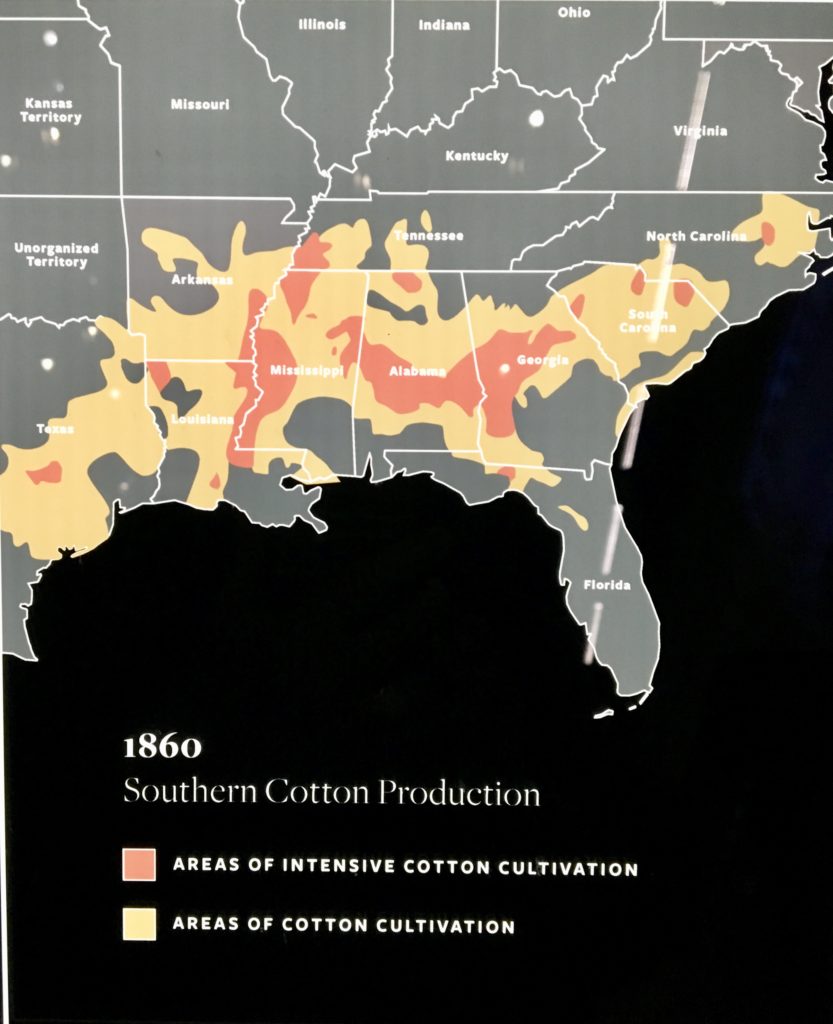
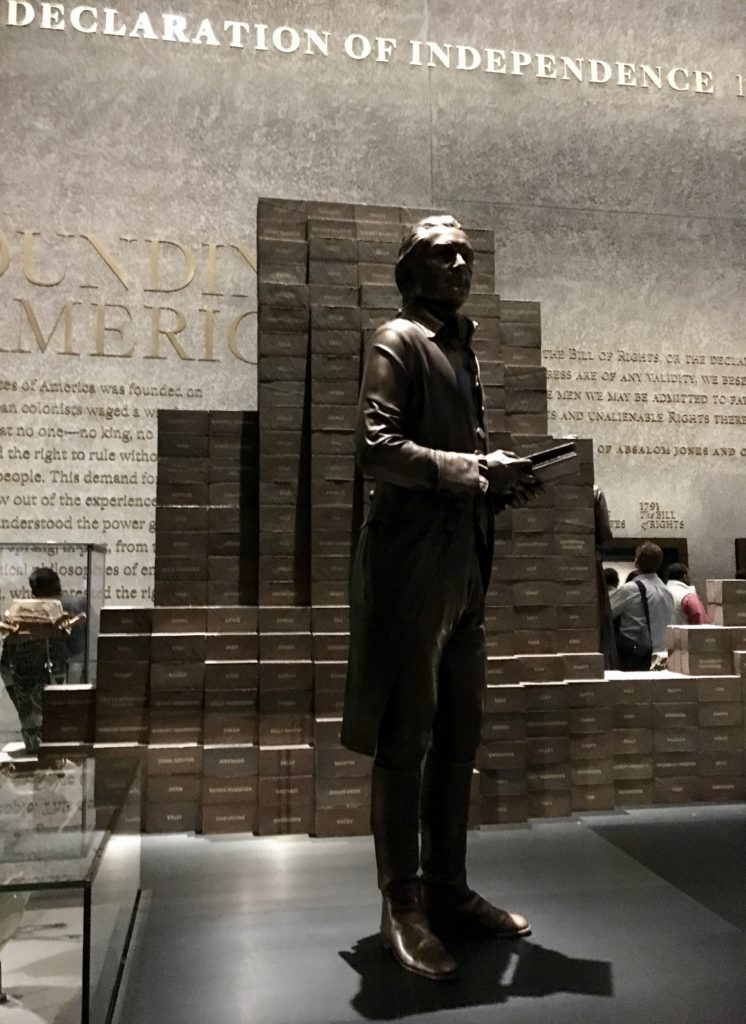
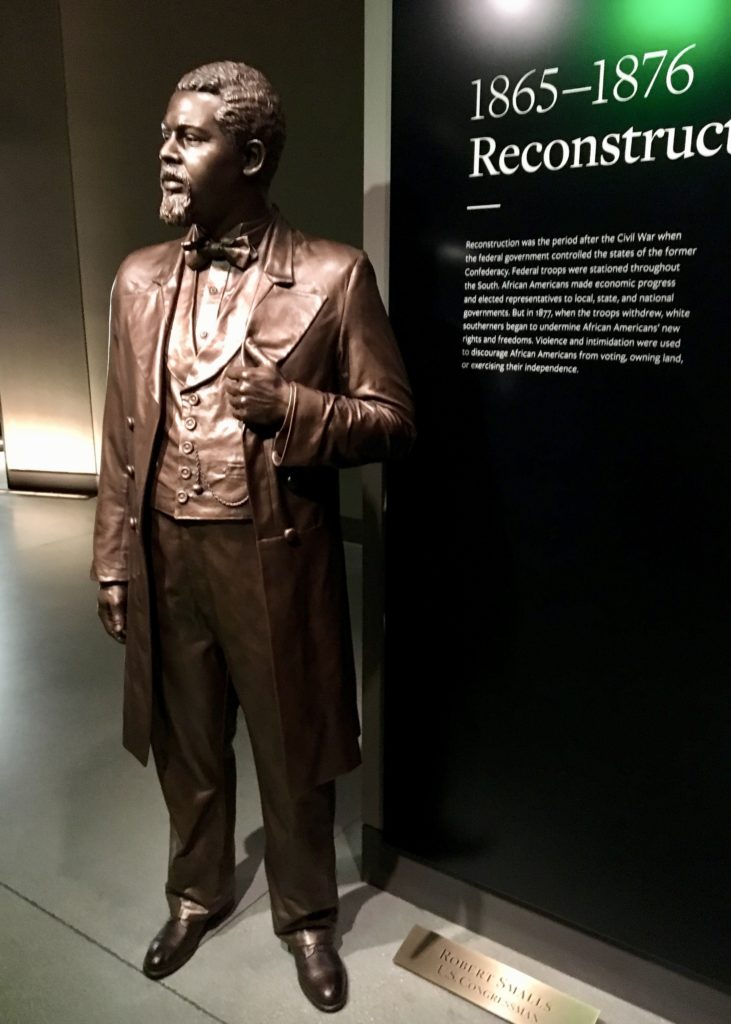
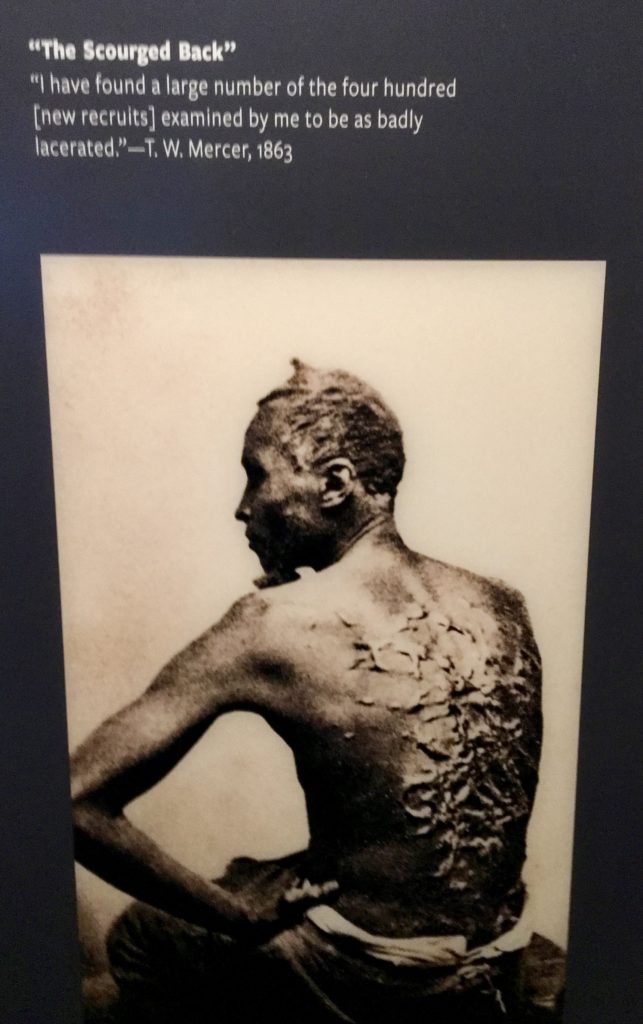
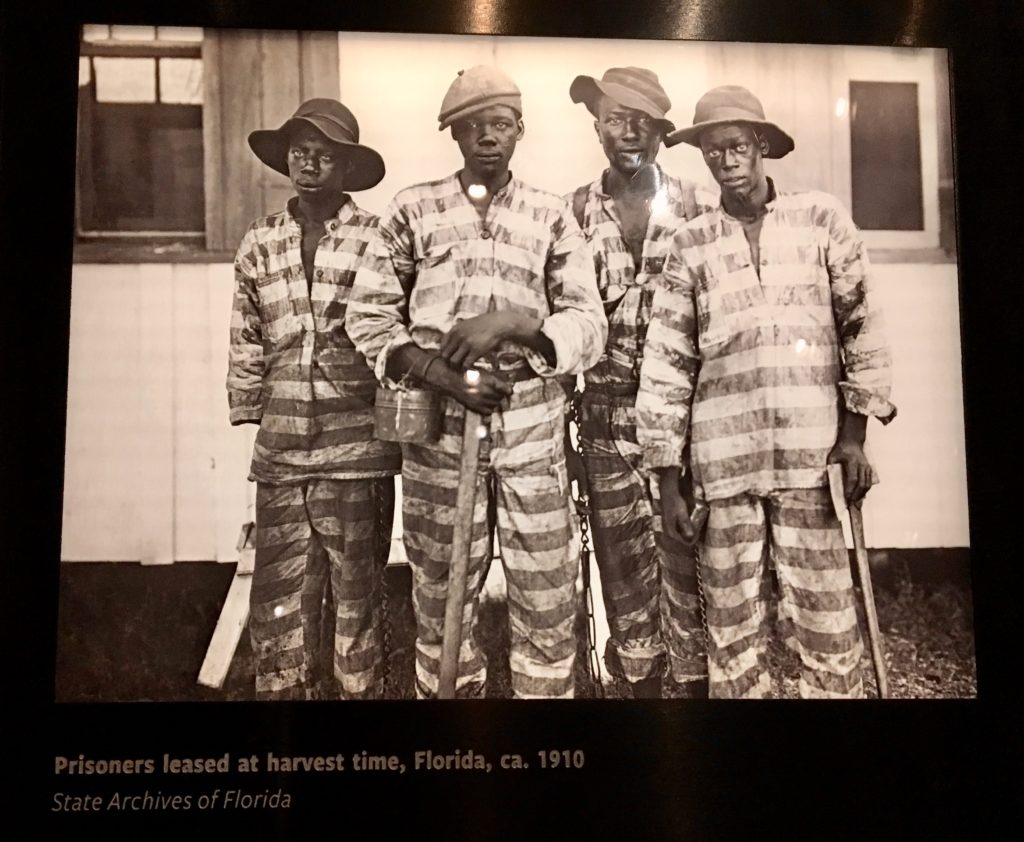

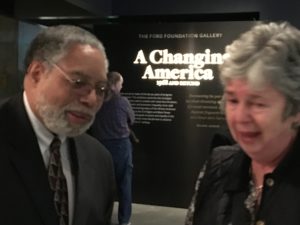
Leave a Reply